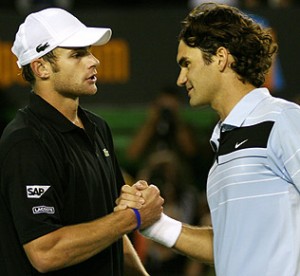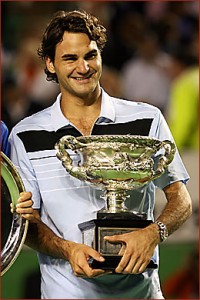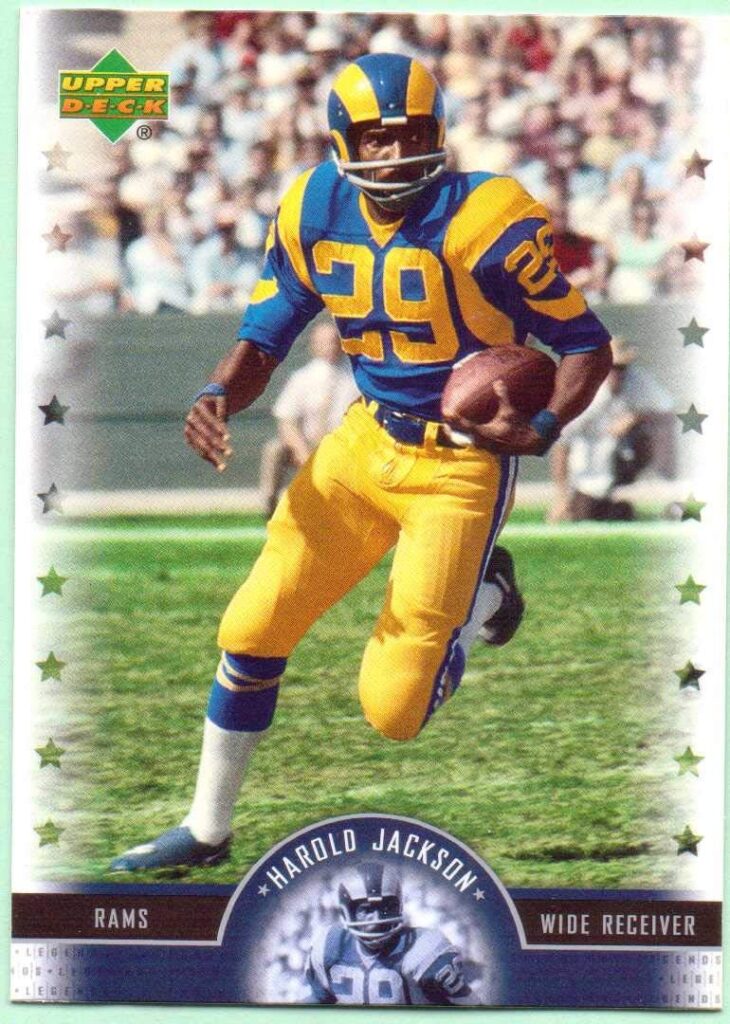2007 Australian Open: In The Zone With Roger Federer

Roger Clearly at the top of his game, Roger Federer made short work of Andy Roddick in the 2007 Australian Open.
I’ve grown accustomed to your pace…
No one was more acutely aware that Andy Roddick was on a roll during the 2007 Australian Open than Roger Federer. The Swiss No. 1 had been keeping a watchful eye on the progress of Roddick through out the early rounds.
This was the man who had defeated Federer in the semifinals of the Kooyong Classic, a warmup event, a few weeks earlier.
Federer was not really surprised that in the quarterfinals Roddick had rolled over Mardy Fish 6-2, 6-2, 6-2 in about 90 minutes on Rod Laver Arena while committing only two unforced errors. He had seen Roddick accomplish such feats before—especially over Fish. They were buddies and knew each other’s games inside and out.
During his quarterfinal match, Federer, who won the Australian Open in 2004 and 2006, overcame having his serve broken four times in his 6-3, 7-6 (7-2), 7-5 win over seventh-seeded Tommy Robredo. Federer would advance to the semifinals where he would meet the American Roddick who had only defeated him once in their 13 meetings.
Roddick was confident, prepared, psyched up with Jimmy Connors sitting in his box daring him to defeat this champion. If you dream it—it will happen. Picture it in your mind and it will unfold that way…
The crowd, the press, and the commentators in the booth felt the positive energy flowing from A-Rod. This, they assured each other and the world, was going to be one of those special occasions.
And it was—except not the way Andy Roddick hoped or anyone else dreamed.
It was a night in the deep-seated, intensely mesmerizing zone inhabited by the Swiss maestro, Roger Federer. In the beginning as the match got underway no one could imagine the scope of the clinic Federer would put on.
The Match
The first set began with Roddick being broken in the opening game even though he managed to get five of six first serves in play. Roddick broke back in the fourth game to even matters. They remained on serve until 4-4 in the first set.
It was at that point in the match that Federer moved into another sphere unknown to most human beings. He became at one with the court, the ball, the racket and the net. Roddick was serving at 30-15 when Federer hit an overwhelmingly powerful backhand passing shot for a winner.
At 30-30, Roddick’s sliced backhand fell into the net as he approached.
Finally, at 30-40, Roddick met Federer at the net, where Federer rebounded quicker and with more touch to complete the break of serve. The first set for Federer (6-4) was in the bag as he held at love.
What no one including Roddick understood immediately was that the match was essentially over at that point. Federer would go on to win 11 games in a row—in fact, 24 of 27 points—as Roddick watched, dazed.
It becomes difficult to catalog the full array of shots zipping past the befuddled Roddick who could do nothing to stem the tide of forehand flicks that skimmed the net and dipped just out of Roddick’s reach.
There were several running one-handed backhands blasted from edges and corners that zipped down the line away from a lunging Roddick. There were volleys hit so sharply that they bounced twice against the rubber surface and quickly died—unable to be returned.
Through it all Federer seemed as calm as still waters can be while underneath the undisturbed demeanor he was amazed at this game he was unleashing against the number one American.
It all was summarized in this moment when in the fourth game of the second set, Roddick, behind 3-0, was astonished to find that Federer had given him a short ball. All of his anger and frustration converged as Roddick attacked the yellow sphere. As he moved forward, he smacked the ball with all the power in his possession and the ball landed near the baseline.
It was an absolute rocket.

After dispatching Roddick, Federer defeated Fernando Gonzalez in straight sets for his 10th Grand Slam victory.
Most players would have ducked for cover, but Federer did not. Instead, he bounded to his left, hitting a backhand reflex half-volley as he moved. The ball whistled cross court for an absolute clean winner while the crowd exhaled in unison in their amazement, soon bursting into whistles and shouts.
Roddick stood at the net dumbfounded at the apparent ease by which Federer had turned Roddick’s winner into such a monstrous loser. The American went down to defeat in the set, 6-0.
Roddick had no answers for Federer during the semifinals. No one could as Roger zoned in on the finish line. After the opening eight games, Federer remained untouchable. Everything turned to gold.
Roddick was helpless against the assault. He grew angry and frustrated because no one wanted to turn this around more than Roddick.
Even Hawkeye—which we all know is hated and despised by the Swiss No. 1—was going Federer’s way. Federer was a perfect 4-for-4 on challenges for the night. All calls went Federer’s way.
Federer converted all seven of his break points against one of the best servers in the game. The win sent Federer into the finals against Fernando Gonzalez, which he won 7-6, 6-4, 6-4, giving him his 10th Grand Slam title and his third Australian Open championship.



